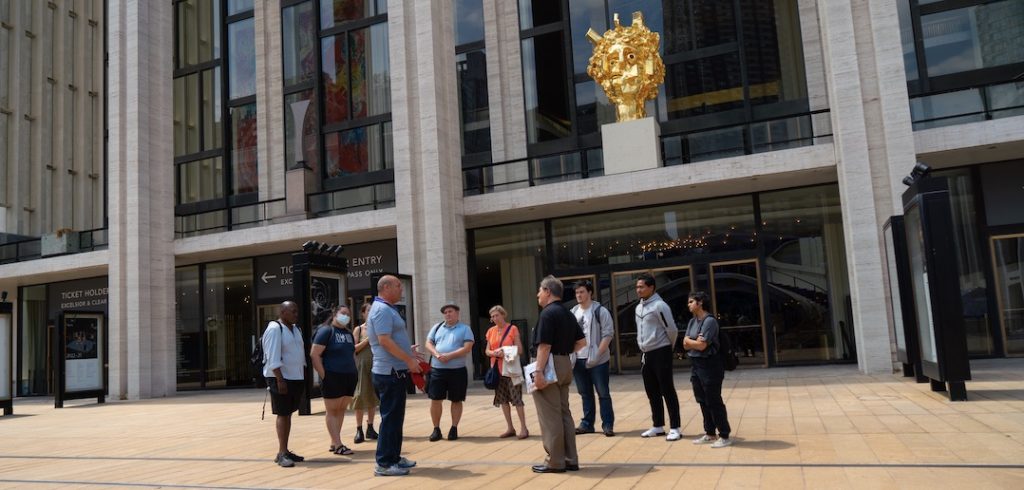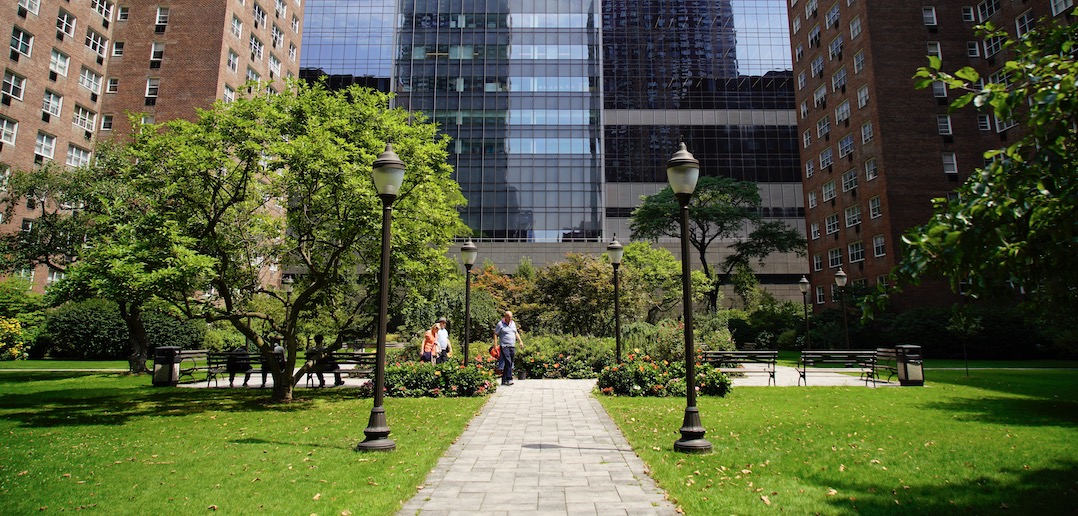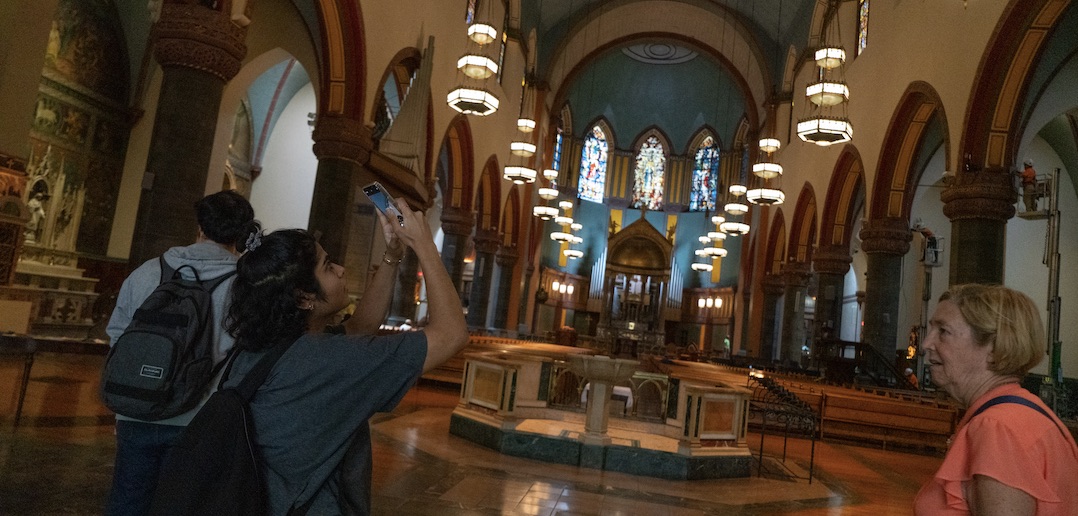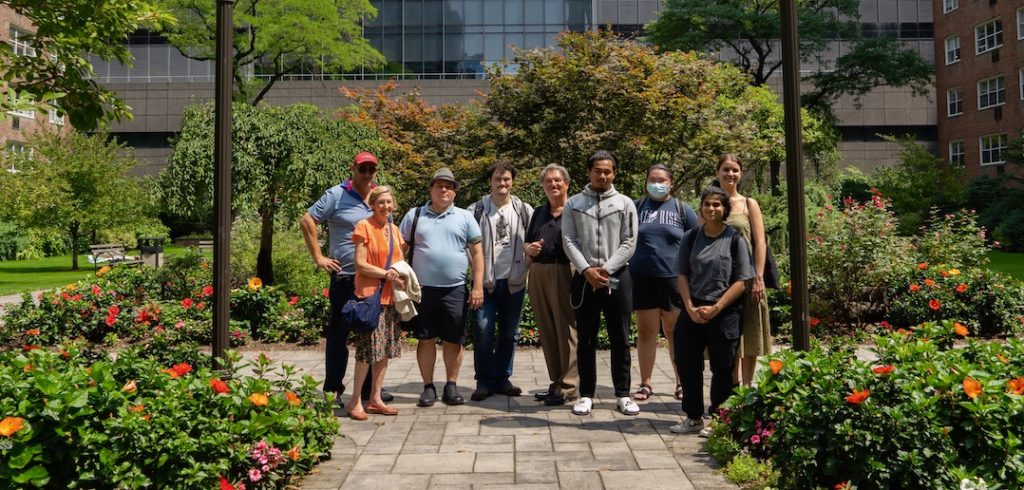“The history of this area is absolutely remarkable and unknown, including the history of Fordham,” said Harold Takooshian, Ph.D., a psychology and urban studies professor who teaches the course.
Urban Psychology offers Fordham students and visiting students a dynamic learning experience in the middle of Manhattan, he said. Through lessons in the classroom and walking tours in the city, students learn how living in an urban environment impacts them—their personality, behavior, values, and relationships—and what makes New York City unique.
The History Behind Fordham College at Lincoln Center’s Name
Since the course began in early July, the students have explored sites across the city, including the United Nations headquarters, Wall Street, and the Javits Center Expansion Rooftop and Farm. Their final tour, co-led by Takooshian and longtime city tour guide Lee Michael Klein, revealed little-known facts about the Lincoln Center campus and the surrounding area.
One of their first stops was Lincoln Center for the Performing Arts. “This became a world-class arts center. It was one of the first places to not just have a symphony, ballet, or the opera, but everything at once,” said Klein.
In 1968—four years after the center was established—Fordham College at Lincoln Center opened its doors, said Takooshian.
“The structure of the buildings in Lincoln Center is kinda weird, the way they put those windows, because it’s designed to match Lincoln Center,” said Takooshian. “Fordham College at Lincoln Center is literally part of Lincoln Center … It’s part of the complex that Robert Moses developed.”

Denzel’s ‘16th-Century England’
Another highlight of the tour was a visit to the residential apartment garden where Denzel Washington practiced acting with his Fordham mentor and professor, Robert W. Stone, at 30 West 60th Street, where Stone once lived, said Takooshian.
“This garden has been here since the building was built in the ’60s,” he said. The garden was freshly manicured with paved walkways and bright hibiscus bushes, but Takooshian drew the group’s attention to a shadier, less colorful part of the garden that borders 9th Avenue. “This side is older. Look over there, and you’ll see old benches and a tree with tiny little apples. I’m guessing that’s where Stone and Denzel met. It’s almost like being in 16th-century England.”
While Takooshian spoke about the neighborhood’s history, a city ambulance drew near, siren blaring at full blast.
“That’s New York, isn’t it?” Takooshian joked.

‘No Matter What You See … There’s Always Something Else’
The afternoon tour was attended by a small but eclectic group of full-time Fordham students, summer session students, University faculty and staff, and friends of the group. Among them were students in Fordham’s School of Professional and Continuing Studies, including a former ballerina from Los Angeles, and two U.S. Marine Corps veterans.
Yuntong Zhao, a student at Barnard College, said that as an international student from Beijing, China, the tour was a special experience. “I don’t really know the city as well, so it’s an amazing opportunity to learn while experiencing the city,” said Zhao, who is living in New York City for the first time this year. “When I was choosing summer classes, I found Fordham to have amazing course offerings. It’s one of the most flexible programs out there at this time.”
The tour was a unique experience for longtime New Yorkers, too. “Being raised in New York, you become accustomed to not doing the touristy things,” said Sathya Samuel Hayes Houston Breckinridge, a summer student from Cambodia who was raised in New York City. “It’s definitely an experience to do the things I’ve always heard about.”
There’s always something new to see in the city, no matter how long you’ve lived here, said Klein, who made the city his home since 1992.
“The thing about New York is that no matter what you see,” said Klein, “there’s always something you’re overlooking—there’s always something else.”



